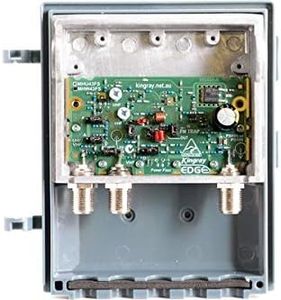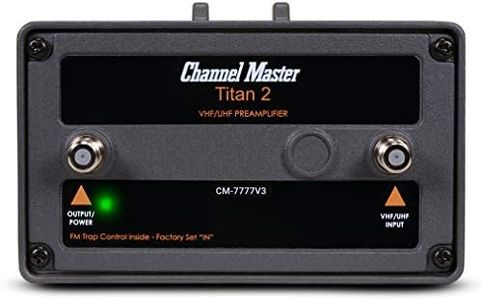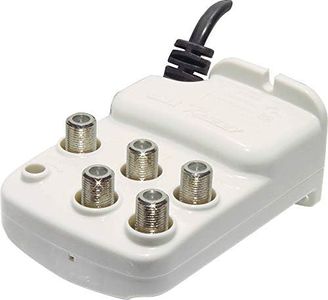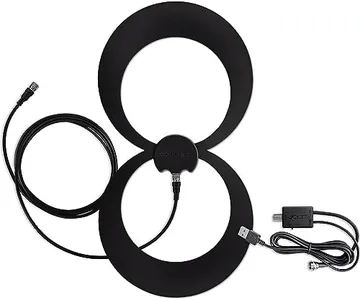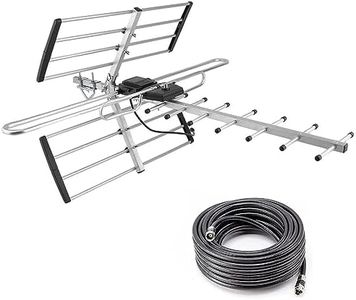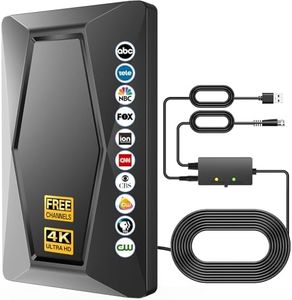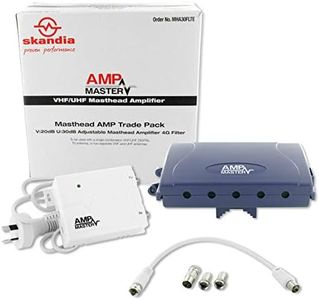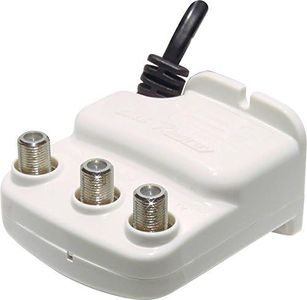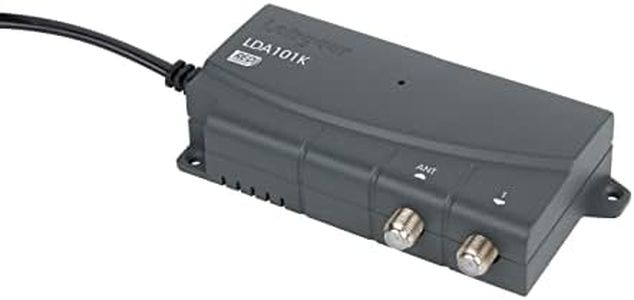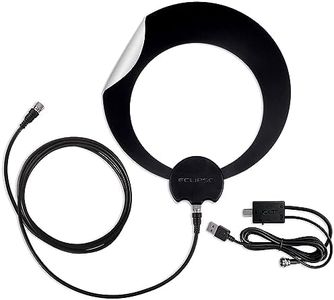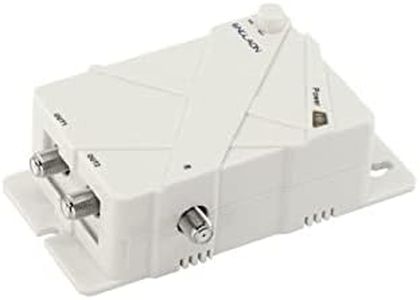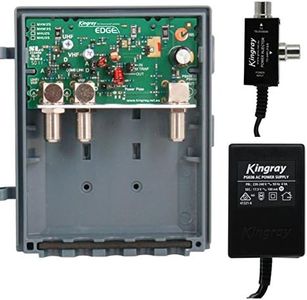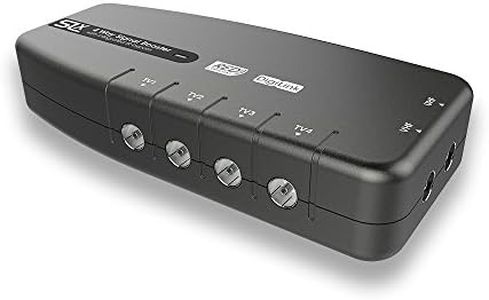We Use CookiesWe use cookies to enhance the security, performance,
functionality and for analytical and promotional activities. By continuing to browse this site you
are agreeing to our privacy policy
10 Best TV Antenna Amplifiers
From leading brands and best sellers available on the web.Buying Guide for the Best TV Antenna Amplifiers
Choosing the right TV antenna amplifier can help you get clearer channels and reduce signal problems if you live far from broadcasting towers or have obstacles like walls and trees. The right amplifier boosts weak signals and may help you pick up more channels with better picture quality. To make the best choice, it's important to understand a few key specifications, as each impacts how well the amplifier will work in your home.Gain (dB)Gain, measured in decibels (dB), shows how much the antenna amplifier increases the strength of the TV signal. Higher gain means a stronger boost, but too much can cause distortion or interference. Typical values range from 10dB to 30dB. If your signal is very weak or you have a long cable run, a higher gain (over 20dB) can be helpful. If you are closer to broadcast towers, a lower gain helps avoid over-amplification. Your choice should be based on how far you are from stations and how many walls or obstacles are in the way.
Noise FigureNoise figure refers to how much unwanted signal (noise) the amplifier adds to the TV signal. Lower numbers are better because they mean less noise is added. Values below 4 dB are generally good for home use. If you need the cleanest possible picture or are already struggling with weak signals, aim for amplifiers with the lowest noise figure you can find.
Power SourceSome TV antenna amplifiers need to be plugged into a wall outlet while others get their power through the coaxial cable from the TV or set-top box (often called 'passive' amplifiers). Wall-powered amplifiers can be stronger, but you need an available outlet near the installation spot. Choose the power source based on where you plan to put the amplifier and what's most convenient in your setup.
Number of OutputsThis spec tells you how many TVs or devices can be connected to the amplifier at once. Some amplifiers have just one output, while others have several. If you want to connect multiple TVs to a single antenna, choose an amplifier with enough outputs to cover all the rooms where TV is needed.
Compatibility (VHF/UHF/Bandwidth)TV signals come in two main bands: VHF and UHF. A good amplifier should support both, because TV channels can be broadcast on either. Also, check the bandwidth if you have any special needs, such as FM radio. Make sure the amplifier clearly lists support for all the frequency bands you want to use, so you don’t end up missing channels.
Indoor vs. Outdoor UseSome amplifiers are designed for indoor use, while others are meant for outdoor installation and have weather-resistant features. If your antenna is outside, choose an amplifier rated for outdoor use to handle rain, sun, and temperature changes. For indoor antennas, an indoor amplifier is sufficient and easier to install.

